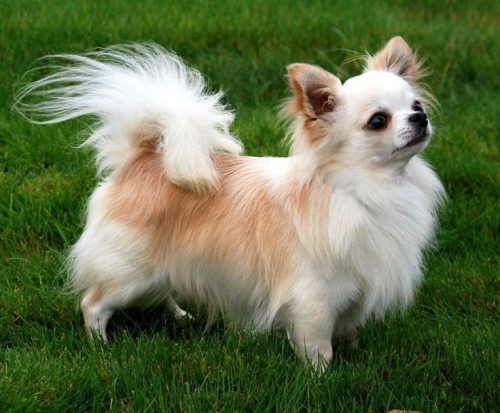
The puppies we showed you earlier (seen below) are Long-coated Chihuahuas. We start getting into trouble by pretending  we know very much about coat genetics, but our homework tells us that the length of a Chihuahua’s coat is determined by two genes. The smooth coat gene is dominant, while the long coat gene is recessive. If the dominant smooth coat gene is present, it will completely hide the recessive long coat gene. So a dog can be a smooth coat (the dominant gene is expressed, or seen), and have a hidden long coat gene, which it can pass on to the offspring. Got it?
we know very much about coat genetics, but our homework tells us that the length of a Chihuahua’s coat is determined by two genes. The smooth coat gene is dominant, while the long coat gene is recessive. If the dominant smooth coat gene is present, it will completely hide the recessive long coat gene. So a dog can be a smooth coat (the dominant gene is expressed, or seen), and have a hidden long coat gene, which it can pass on to the offspring. Got it?
We won’t even dip a toe into Chihuahua color genetics, not at this time, anyway. It’s “involved.” Black, for instance, is the most dominant color in the breed, genetically speaking, but certain gene combinations might result in a blue Chihuahua, even if the dominant gene for a black coat is present, so solid black Chihuahuas are pretty rare even though there are at least three dominant genes that result in solid black. Because they’re all dominant, they’re easier to breed out than recessive genes are. Like we said. “Involved.” As always we invite breed experts on the topic to weigh in (please weigh in!!)
